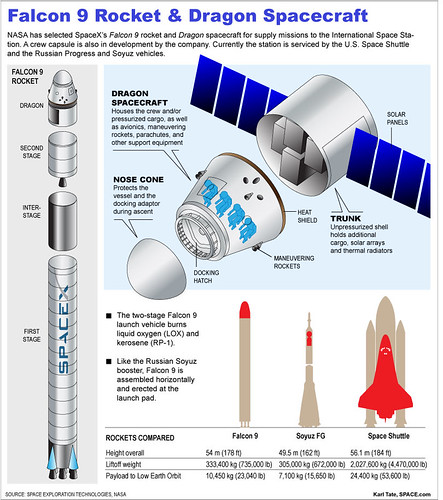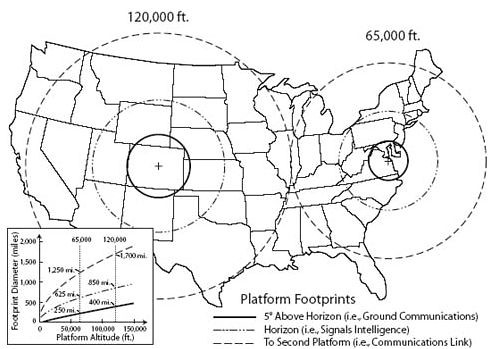Sea Launch, the rocket launching platform installed on a modified oil drilling platform, celebrated this week the 15 year anniversary of the successful maiden launch of the DemoSat spacecraft that occurred on March 27, 1999.
It was Sea Launch’s inaugural launch. The payload for the first mission was a dummy, designed to mimic the mass properties of a 4,500 kilogram spacecraft, the largest GEO satellite at the time.
Sea Launch was established in 1995 as a consortium of four companies from Norway, Russia, Ukraine and the United States, managed by Boeing.
The idea was to launch directly under the equator, near Hawaii.
The rocket and its payload are assembled on the Sea Launch Commander ship in Long Beach, California, while the self-propelled launching platform , the Ocean Odyssey, is moved to the equatorial Pacific Ocean for launch.
 In June 2009 Sea Launch filed for Chapter 11 bankruptcy. Energia, a Russian corporation, now owns and operates Sea Launch. Boeing retains 5 percent of the company’s shares in partnership with Aker Maritime, a Norwegian shipbuilder which provides Sea Launch’s marine vessels.
In June 2009 Sea Launch filed for Chapter 11 bankruptcy. Energia, a Russian corporation, now owns and operates Sea Launch. Boeing retains 5 percent of the company’s shares in partnership with Aker Maritime, a Norwegian shipbuilder which provides Sea Launch’s marine vessels.
The chief executive of Sea Launch now says he would be open to a Russian government takeover of the company if it yielded greater access to the market for launching Russian satellites.
 A competing international launch consortium, International Launch Services was formed in 1995 as a private spaceflight partnership between Lockheed Martin, Khrunichev and Energia. ILS initially co-marketed non-military launches on both the U.S. Atlas and the Russian Proton rockets.
A competing international launch consortium, International Launch Services was formed in 1995 as a private spaceflight partnership between Lockheed Martin, Khrunichev and Energia. ILS initially co-marketed non-military launches on both the U.S. Atlas and the Russian Proton rockets.
The US-Russian joint venture has its headquarters in Reston, Virginia.
SpaceX is an American company. Their next Falcon 9 launch is scheduled for the evening of Sunday, March 30 for a space station resupply.
Space X competes with a heavily subsidized Evolved Expendable Launch Vehicle from Boeing and Lockheed. Taxpayers subsidized duplicate EELV programs from Boeing and Lockheed until the companies were essentially forced to merge their vastly overbudget EELV programs to form the United Launch Alliance.
 The US-based United Launch Alliance, a joint venture of Lockheed Martin and Boeing, was formed in December 2006 after both companies racked up tens of billions in cost overruns on competing EELV heavy lifter programs.
The US-based United Launch Alliance, a joint venture of Lockheed Martin and Boeing, was formed in December 2006 after both companies racked up tens of billions in cost overruns on competing EELV heavy lifter programs.
Lockheed agreed to drop charges that Boeing spied on Lockheed, and to end the litigation both companies agreed to join forces to form the United Launch Alliance.
EELV must be really, really important.
Some 151 EELV launches are now expected for a program cost of $70 billion (or about $2 billion a launch), according to a Pentagon report released last year.
Many in Congress, on both sides of the aisle, have been skeptical about the Commercial Crew Program where private space ventures like SpaceX deliver astronauts to the International Spacestation. These lawmakers tend to favor the heavy-lift Space Launch System rocket and companion deep-space crew capsule Orion, which are being developed at an annual cost of nearly $3 billion.
Unlike the Commercial Crew Program, where industry is largely responsible for vehicle designs, SLS and Orion are being built under traditional government contracts using designs dictated by NASA.
The 2014 omnibus spending bill targets the U.S. Air Force’s EELV program for the biggest reductions. The satellite launching program, a major source of congressional heartburn in recent years due to soaring costs, is now slated to receive $368 million less in 2014 than the $1.8 billion requested by Barack Obama.
Near-space platforms at 12 miles (20K meters/65K feet) are 20 times closer than a typical 400-kilometer LEO satellite at 250 miles. High altitude UAVs can stare — 24/7 — without blinking or human needs. Mercury’s sigint computers are powered by nVidia GPUs and Intel processors for TeraFLOPS processing.
Related DailyWireless stories include; Space X on the Pad, SpaceX: In Orbit, NASA: New Goals, Man on the Moon: Later, Beyond the Moon, Space Cold War, NRO: The Real Ice Station Zebra?, DOD Launches UHF Satphone Satellite, Chinese Destroy Satellite – Create Space Debris Field, Space Radar Launch, F.I.A. FUBAR, Satellite Jam, Lockheed CEO: Space is Broken, NRO Rides Again, EELV Rocket Program Merges, T-Minus 10 for Space X, Rocket Welfare, SpaceX: Geosynchronous Launch, SpaceX: Successful Launch for Falcon 9
Posted on Fri, 28 Mar 2014 17:23:59 +0000 at http://www.dailywireless.org/2014/03/28/...ars-later/
Comments: http://www.dailywireless.org/2014/03/28/.../#comments





